Cost and performance matter when picking building materials, especially with the pressure to move towards more sustainable construction. Construction accounts for 11% of global greenhouse gas emissions according to the World Green Building Council, making it a major contributor. More people in construction are beginning to ask how they can make choices to reduce the impact on the environment. While some materials pump out a lot of carbon during production, the latest building materials actually trap it. In this guide, we rank the carbon footprint of all the major construction materials being used today to give a better look at the impact.
Quick look:
- Picking low-carbon materials takes more than just looking at factory emissions. You also have to think about how long the material will last, how it’s made, and what happens to it when the building comes down.
- Mass timber, hempcrete, and cellulose insulation stand out for their carbon sequestration and renewable sourcing.
- High-emission materials like steel, concrete, and aluminum can still be sustainable when recycled or blended with low-carbon alternatives.
- Transportation, maintenance, and recyclability all influence a material’s total carbon footprint and should guide sustainable building decisions.
What determines the best low-carbon material?
While it’s easy to focus on emissions during manufacturing, a material’s total carbon footprint includes much more than just what happens in the factory. The full picture looks at embodied carbon, which accounts for emissions from raw material extraction, production, transport, and installation. It also includes how long the material lasts, how often it needs to be maintained or replaced, and what happens to it at the end of its life.
Some materials, like timber and hemp, store carbon during their growth, giving them a major edge in sustainability. Others, like concrete and aluminum, come with high upfront emissions but offer structural strength and durability that can reduce the need for frequent repairs or replacements. Choosing the best material means weighing all of these factors, not just one.
Here’s what goes into ranking low-carbon building materials:
- Embodied carbon: Total emissions from extraction, processing, transport, and installation
- Potential for carbon sequestration: Ability to absorb and store carbon over time
- Longevity and durability: How long the material performs without needing replacement
- Maintenance and replacement needs: Frequency and impact of ongoing upkeep
- End-of-life options: Can it be reused, recycled, or safely broken down?
- Transport emissions: How far the material travels from the source to the site, and how it gets there
Considering all these elements helps identify which materials truly support a low-carbon future in construction.
Carbon footprint of 13 common construction materials
1. Mass timber (e.g., CLT, Glulam)

Photo courtesy of https://www.shutterstock.com/
Embodied carbon: ~100–200 kg CO₂e/m³
More builders are turning to mass timber options like cross-laminated timber (CLT) and glulam as greener alternatives to steel and concrete. Made by layering and gluing pieces of wood together, these materials are strong enough for commercial and mid-rise buildings, but still light, renewable, and better for the planet.
One of mass timber’s biggest advantages is its ability to sequester carbon. Trees absorb carbon dioxide as they grow, and that carbon remains stored in the wood for the life of the building. Compared to traditional materials, mass timber also requires less energy to manufacture. However, sourcing plays a role. Imported wood can offset some of these carbon savings due to transportation emissions. Still, when responsibly sourced and used appropriately, mass timber strikes a strong balance between performance and sustainability.
2. Autoclaved aerated concrete (AAC)
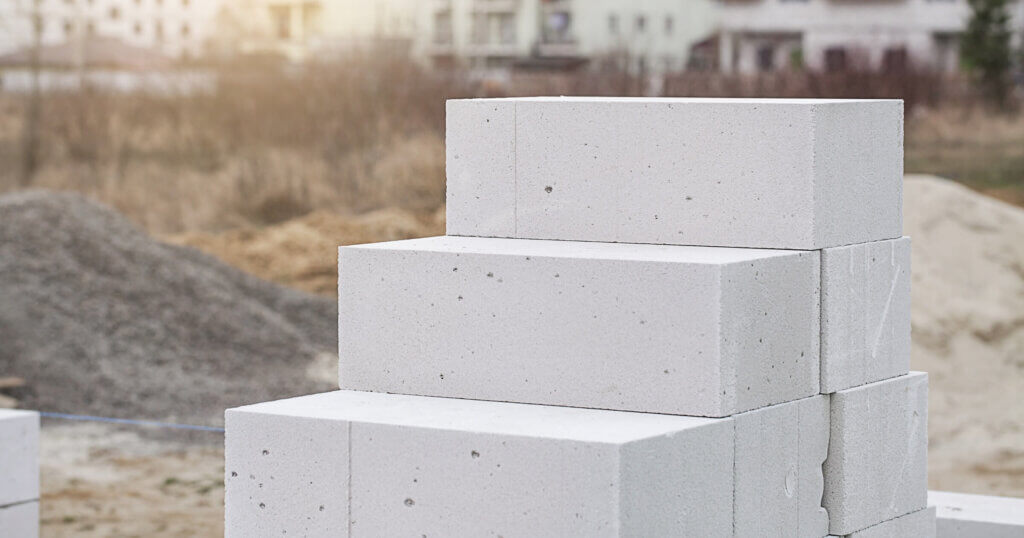
Photo courtesy of https://www.shutterstock.com/
Embodied carbon: ~250–290 kg CO₂e/m³
Autoclaved aerated concrete is a lightweight, precast building material known for its excellent thermal insulation and ease of use. AAC is made by mixing cement, lime, sand, water, and a bit of aluminum powder. That powder creates tiny air bubbles, giving the material its light, foamy texture. Once shaped, the blocks are cured with high-pressure steam, which makes them strong and fire-resistant.
Even though it’s still a cement-based product, AAC usually requires less raw material than standard concrete. Its insulation properties can help cut down on heating and cooling needs over time, which is a win for energy efficiency. Plus, because the blocks are so light, buildings often need less structural support, which can lower material use.
3. Cement

Photo courtesy of https://www.shutterstock.com/
Embodied carbon: ~850–950 kg CO₂e/ton
Cement is one of the most widely used and carbon-intensive materials in construction. Its big carbon footprint comes from two main sources: breaking down limestone, which gives off carbon dioxide, and the massive amount of energy needed to heat the kilns. Together, these processes make cement one of the biggest sources of greenhouse gas emissions worldwide, responsible for about seven to eight percent of global CO₂ output.
Even with its environmental downsides, cement is still an important part of concrete and keeps modern buildings strong and stable. There are lower-carbon options out there like Carbicrete, but standard cement is still widely used across the industry. Reducing reliance on cement or incorporating it into more sustainable blends is important to lowering the overall carbon impact of many building projects.
4. Concrete

Photo courtesy of https://www.shutterstock.com/
Embodied carbon: ~300–500 kg CO₂e/m³
Concrete is the backbone of modern construction, used in everything from foundations and bridges to skyscrapers and sidewalks. Its carbon footprint largely comes from the cement used in the mix, which accounts for the majority of emissions. Because of its scale and versatility, concrete contributes significantly to global embodied carbon totals.
That said, concrete is also one of the most actively researched materials when it comes to carbon reduction. Some newer approaches are helping bring concrete’s carbon footprint down. Materials like fly ash or slag can replace part of the cement in a mix to cut emissions without compromising strength. There are also carbon-injected concrete technologies that trap carbon dioxide during curing, making the final product both stronger and more environmentally friendly.
5. Glass

Photo courtesy of https://www.shutterstock.com/
Embodied carbon: ~1,500–2,000 kg CO₂e/ton
Glass plays an important role in modern architecture, especially in façades, windows, and skylights. However, producing it is highly energy-intensive. The process requires melting raw materials like silica sand, soda ash, and limestone at extremely high temperatures, which contributes to its significant carbon footprint.
Despite its high embodied carbon, glass has some redeeming qualities when it comes to sustainability. It is fully recyclable, and using recycled glass (cullet) in production can dramatically cut down energy use and emissions. In buildings, high-performance glass can also improve energy efficiency by reducing the need for heating and cooling. When used strategically and sourced from recycled content, glass can offer both functional and environmental benefits.
6. Drywall (gypsum board)

Photo courtesy of https://www.shutterstock.com/
Embodied carbon: ~5–12 kg CO₂e/m²
Drywall, often called gypsum board or plasterboard, is a go-to material for interior walls and ceilings. Its carbon footprint is fairly moderate compared to heavier structural materials, partly because gypsum is both widely available and easy to recycle.
That said, the manufacturing process still relies heavily on fossil fuels to heat and dry the boards, which adds to its emissions. Transportation and installation also contribute to its embodied carbon, though on a smaller scale. The good news is that drywall can often be recycled at the end of its life, and some manufacturers are finding ways to use synthetic or reclaimed gypsum to reduce environmental impact even further.
7. General Insulation

Photo courtesy of https://www.shutterstock.com/
Embodied carbon: 1.7–2.5 kg CO2e per square meter per inch of thickness
Insulation is one of the most important parts of a building when it comes to saving energy. In many cases, the energy it helps save over time is worth more than the emissions from making it. That said, not all insulation is created equal. Materials like fiberglass, mineral wool, EPS, and spray foam all come with their own pros, cons, and environmental impacts.
Fiberglass and mineral wool generally have lower embodied carbon and are made with a high percentage of recycled content. Spray foam, on the other hand, tends to have a higher carbon footprint due to its petrochemical base and use of blowing agents. Even so, its ability to seal up air leaks can make a big difference in how well a building runs. Picking the right insulation means weighing the carbon cost of making it against the energy it can save over time. When done properly, it’s one of the best ways to lower a building’s carbon impact.
8. Cellulose insulation

Photo courtesy of https://www.shutterstock.com/
Embodied carbon: ~0.8–1.4 kg CO₂e/kg
Cellulose insulation is mostly made from recycled newspaper and other paper waste, which makes it one of the more eco-friendly options out there. It doesn’t take much processing to produce, so its carbon footprint stays pretty low compared to other types of insulation. In addition to reducing landfill waste, the material has the added benefit of storing carbon absorbed during the paper’s original life cycle.
Because cellulose is plant-based, it offers strong carbon sequestration potential while also providing solid thermal performance. It’s typically treated with non-toxic fire retardants, making it safe for residential and commercial use. With its low environmental impact and high insulating value, cellulose insulation is a top choice for builders aiming to minimize both embodied and operational carbon.
9. Hempcrete
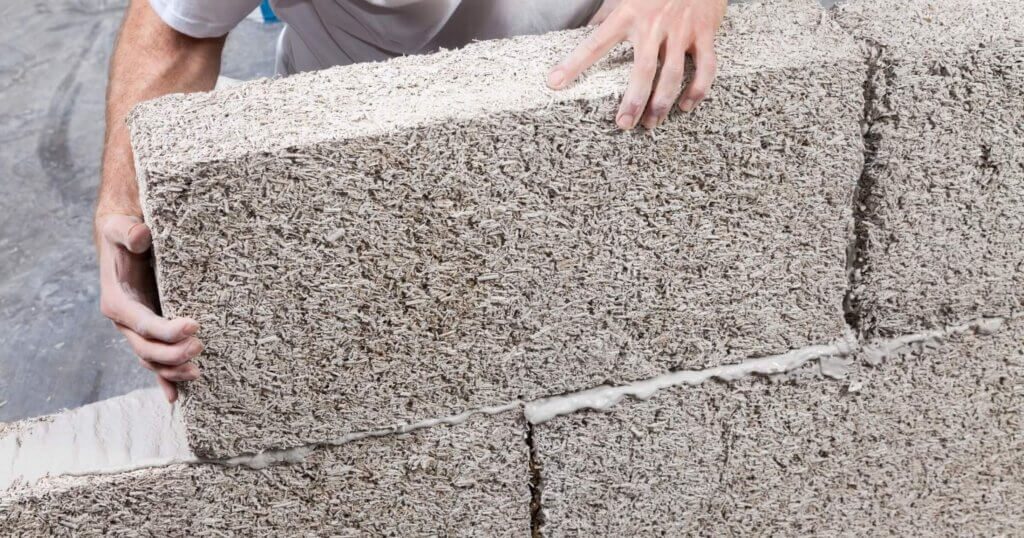
Photo courtesy of https://www.isohemp.com
Embodied carbon: Net negative or near zero
Hempcrete is a bio-based building material made from the woody core of the hemp plant (shiv), mixed with a lime-based binder. During growth, hemp absorbs large amounts of carbon dioxide, and the lime binder continues to absorb CO₂ as it cures, making hempcrete one of the few materials with a net negative or near-zero embodied carbon footprint.
Hempcrete also naturally helps balance indoor temperature and humidity, which makes for a more comfortable and energy-efficient space. Since it isn’t strong enough to support a building on its own, it’s typically used with a structural frame, often filling in walls or acting as insulation. For anyone trying to build with a lighter environmental touch, hempcrete brings a good mix of practical benefits and carbon savings.
10. Steel
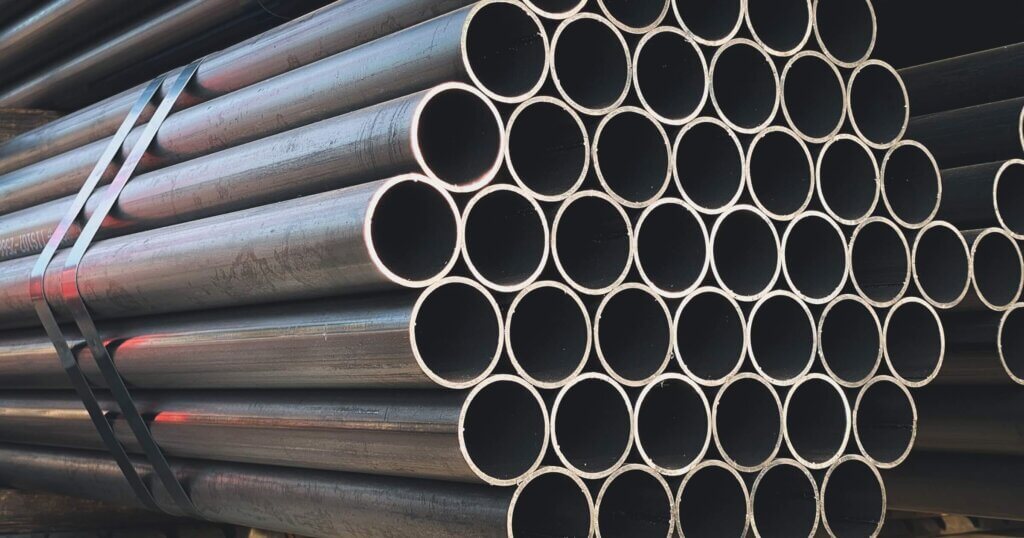
Photo courtesy of https://www.shutterstock.com/
Embodied carbon: ~1.9–2.1 tons CO₂e/ton
Steel is one of the most widely used materials in construction because it’s strong, durable, and incredibly versatile. The downside is its carbon footprint. Making steel from scratch means mining raw iron ore and burning a lot of fossil fuels, especially in traditional blast furnaces, which leads to high emissions.
That said, steel also has a lot of potential when it comes to sustainability. It lasts a long time and can be recycled again and again without losing strength. Using recycled steel, particularly when it’s made in electric arc furnaces, can cut emissions by a large margin. Many builders today are leaning on recycled content to reduce environmental impact without giving up structural performance. When chosen carefully, steel can still be a solid choice for low-carbon projects.
11. Aluminum
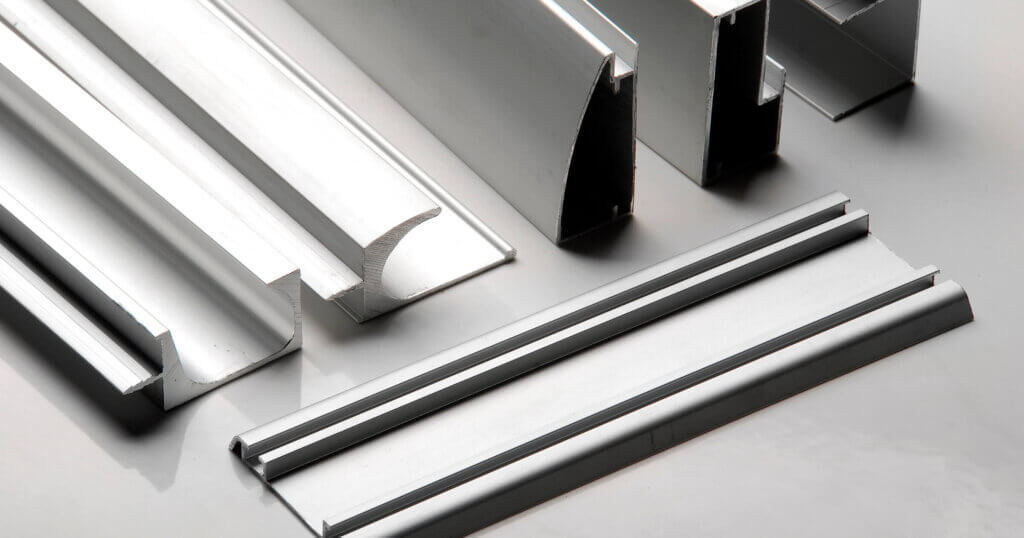
Photo courtesy of https://www.shutterstock.com/
Embodied carbon: ~10–12 tons CO₂e/ton (primary), ~0.5–1.0 tons CO₂e/ton (recycled)
Aluminum is one of the most energy-intensive construction materials to produce, especially when made from raw bauxite ore. The smelting process requires large amounts of electricity, often from fossil fuel sources, which results in a very high embodied carbon footprint for primary aluminum.
However, aluminum also has some major advantages. It’s lightweight, corrosion-resistant, and highly durable, which can reduce maintenance and structural demands over time. Most importantly, it is endlessly recyclable without losing quality. Producing aluminum from recycled content uses just a fraction of the energy, cutting emissions by up to 95 percent. When recycled aluminum is used, its sustainability profile improves dramatically, making it a strong choice in projects focused on long-term performance and circularity.
12. Stone
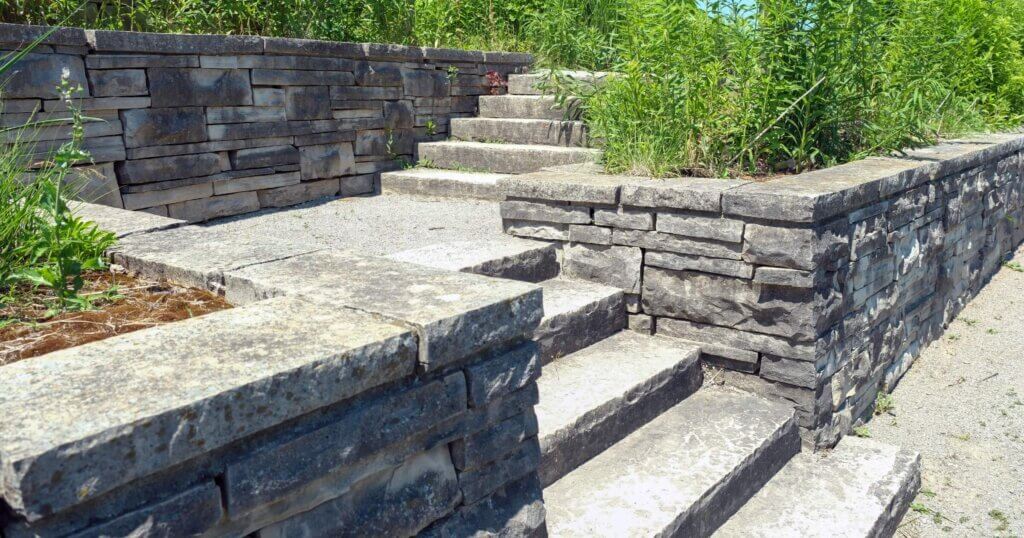
Photo courtesy of https://www.shutterstock.com/
Embodied carbon: ~100–250 kg CO₂e/ton
Natural stone is one of the most durable and long-lasting materials used in construction. It has a fairly low carbon footprint because it doesn’t take much to get it ready for use. Most of the time, it just needs to be quarried, cut, and finished. That simple process helps keep emissions in check.
The bigger issue is transportation. Stone is heavy, and if it has to travel a long distance from the quarry to the job site, its carbon impact can rise quickly. Where it’s sourced makes a big difference. When used locally and in designs that highlight its longevity and minimal maintenance needs, stone can be a low-impact, high-performance material with timeless appeal.
13. Bamboo
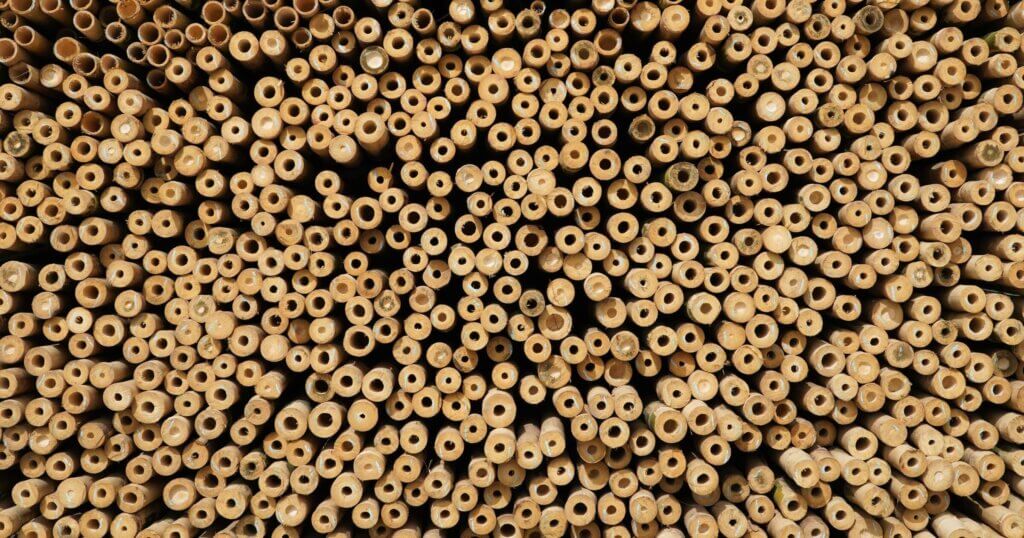
Photo courtesy of https://www.shutterstock.com/
Embodied carbon: ~100–200 kg CO₂e/m³
Bamboo is a fast-growing, renewable material that offers strong environmental benefits when used in construction. It absorbs huge amounts of carbon dioxide during its growth and can be harvested in just a few years, unlike traditional timber, which takes decades. This makes bamboo a great option for sequestering carbon and reducing overall emissions.
Its main drawback is that it requires chemical treatment to resist moisture, insects, and decay, especially in humid climates. If not treated properly, bamboo won’t hold up well over time. But when it’s sourced responsibly and given the right protection, it’s a strong, flexible option for low-carbon building projects.
Bottom line
The most sustainable projects are the ones that find the right balance between low embodied carbon, durability, and what happens to materials at the end of their life. Factors such as climate, location, structural requirements, and the availability of materials all influence the best choice. Whether you’re using mass timber to lock in carbon, hempcrete to lower your footprint, or recycled steel for its strength and reusability, thoughtful decisions can make a big difference in the long run when it comes to reducing the carbon footprint of used construction materials.
Want more insights like this delivered straight to your inbox? Subscribe to our newsletter for practical tips, industry news, and sustainability strategies built for the trades.


